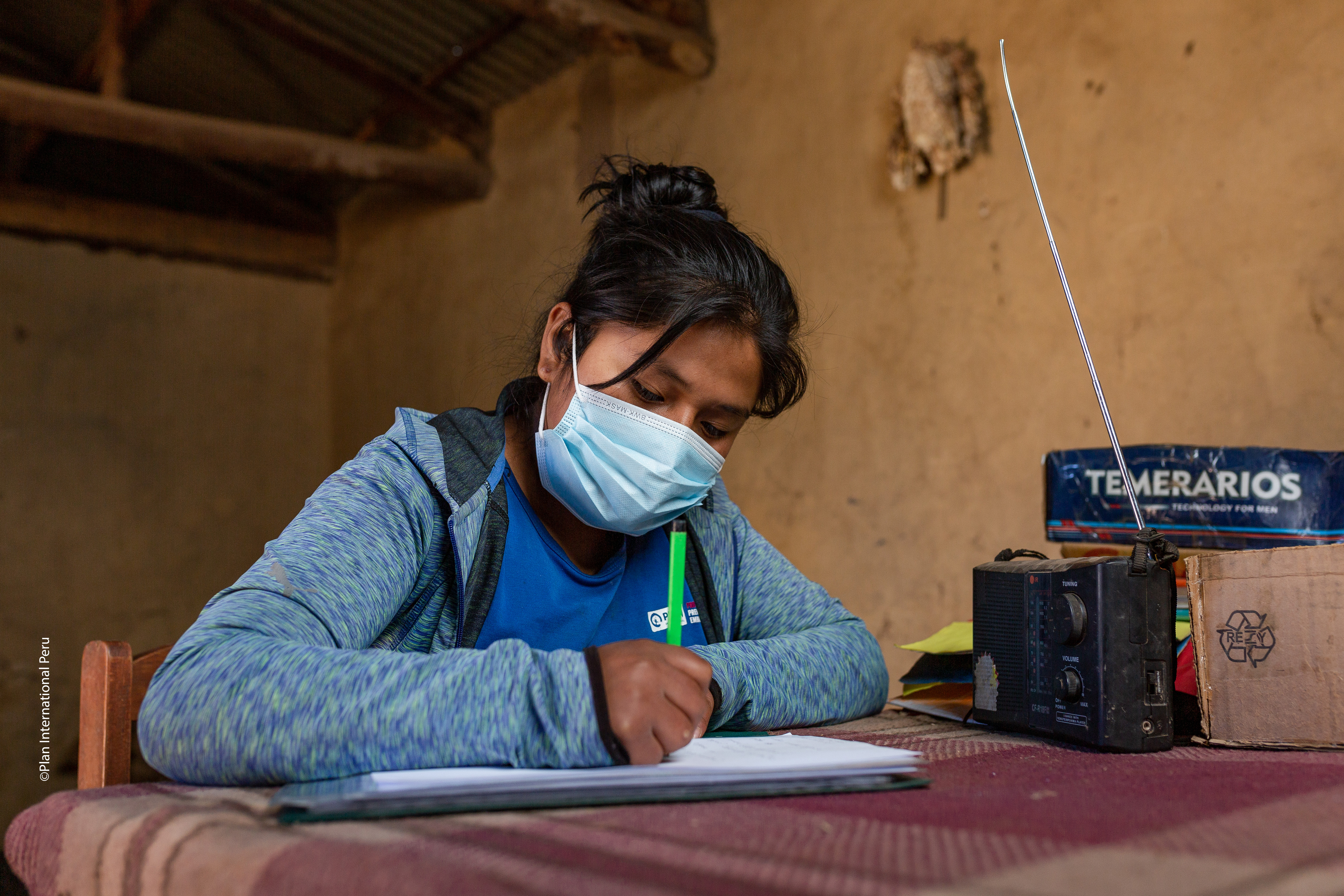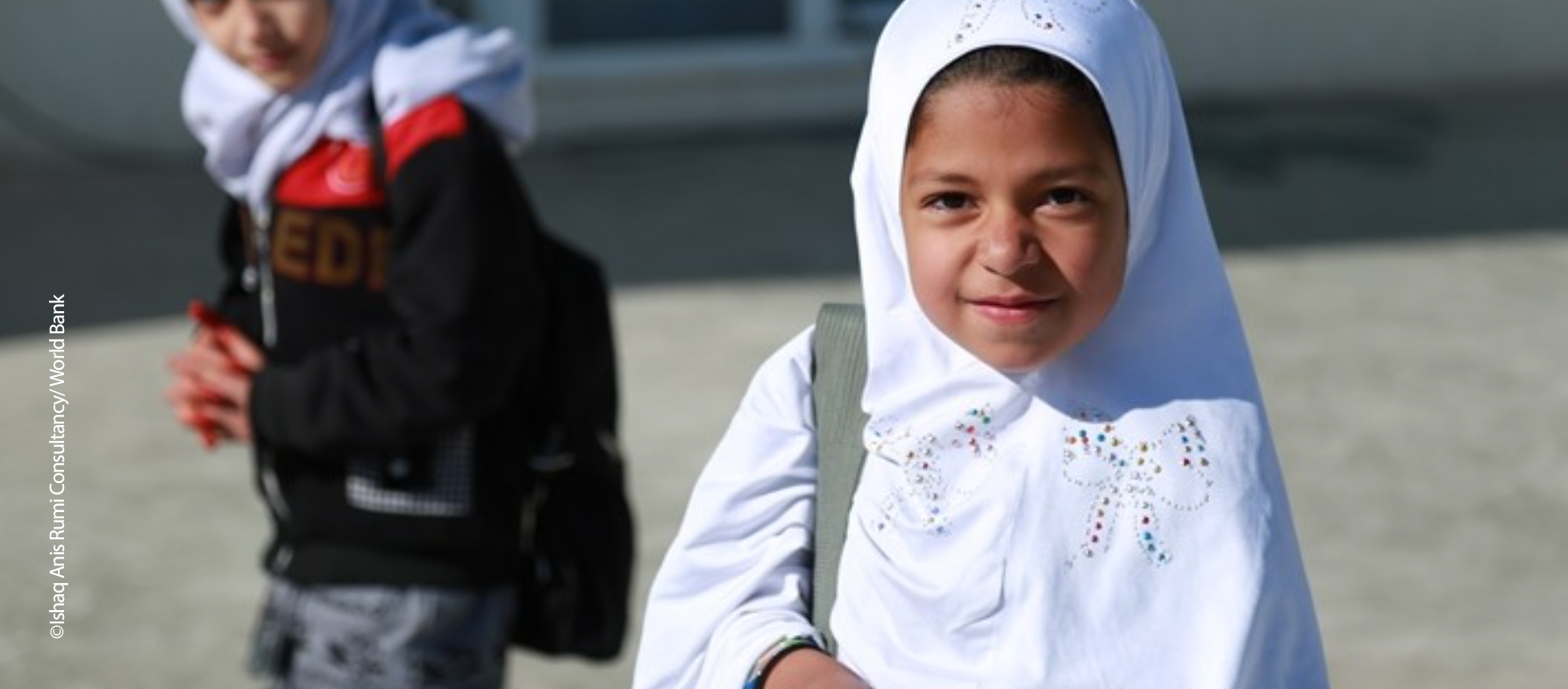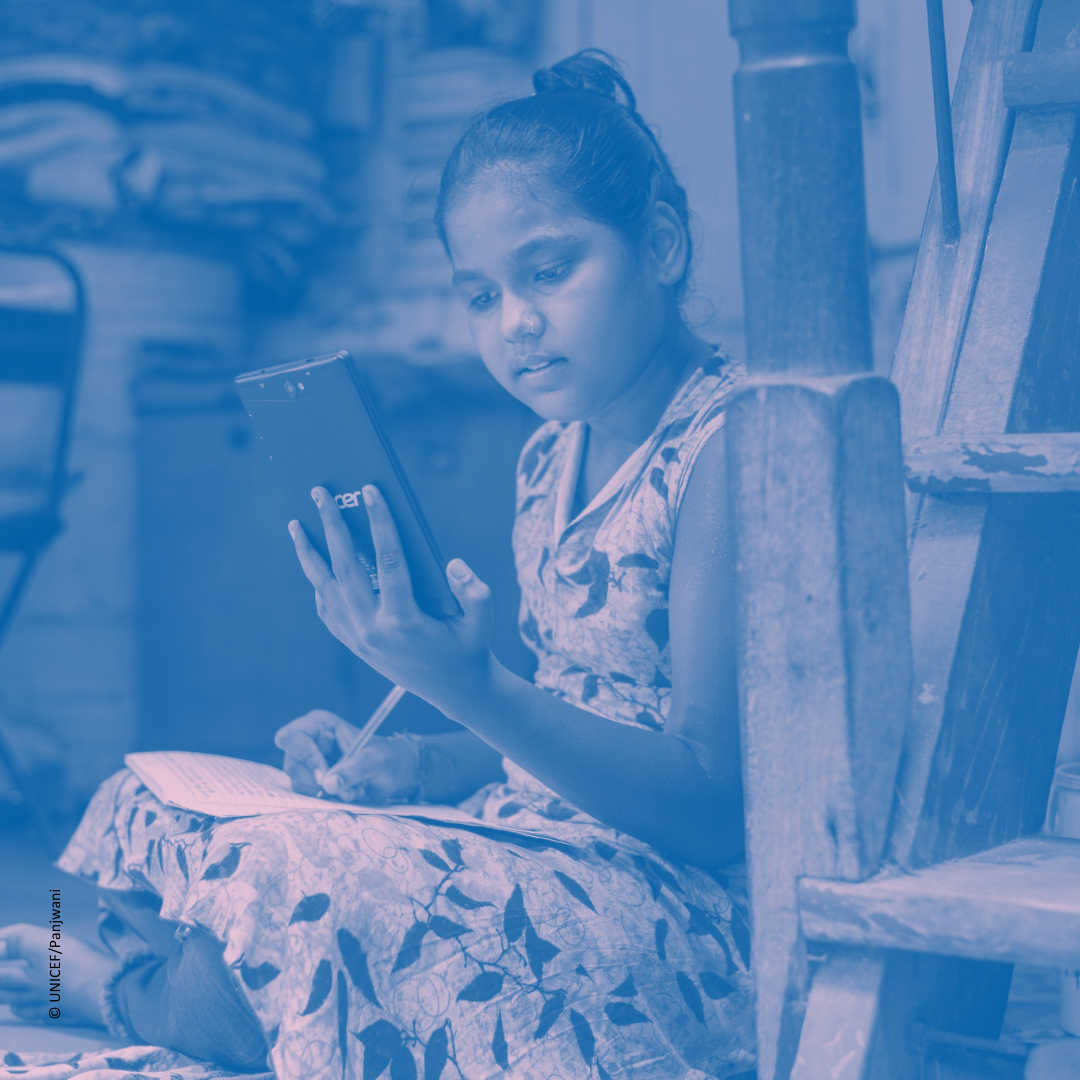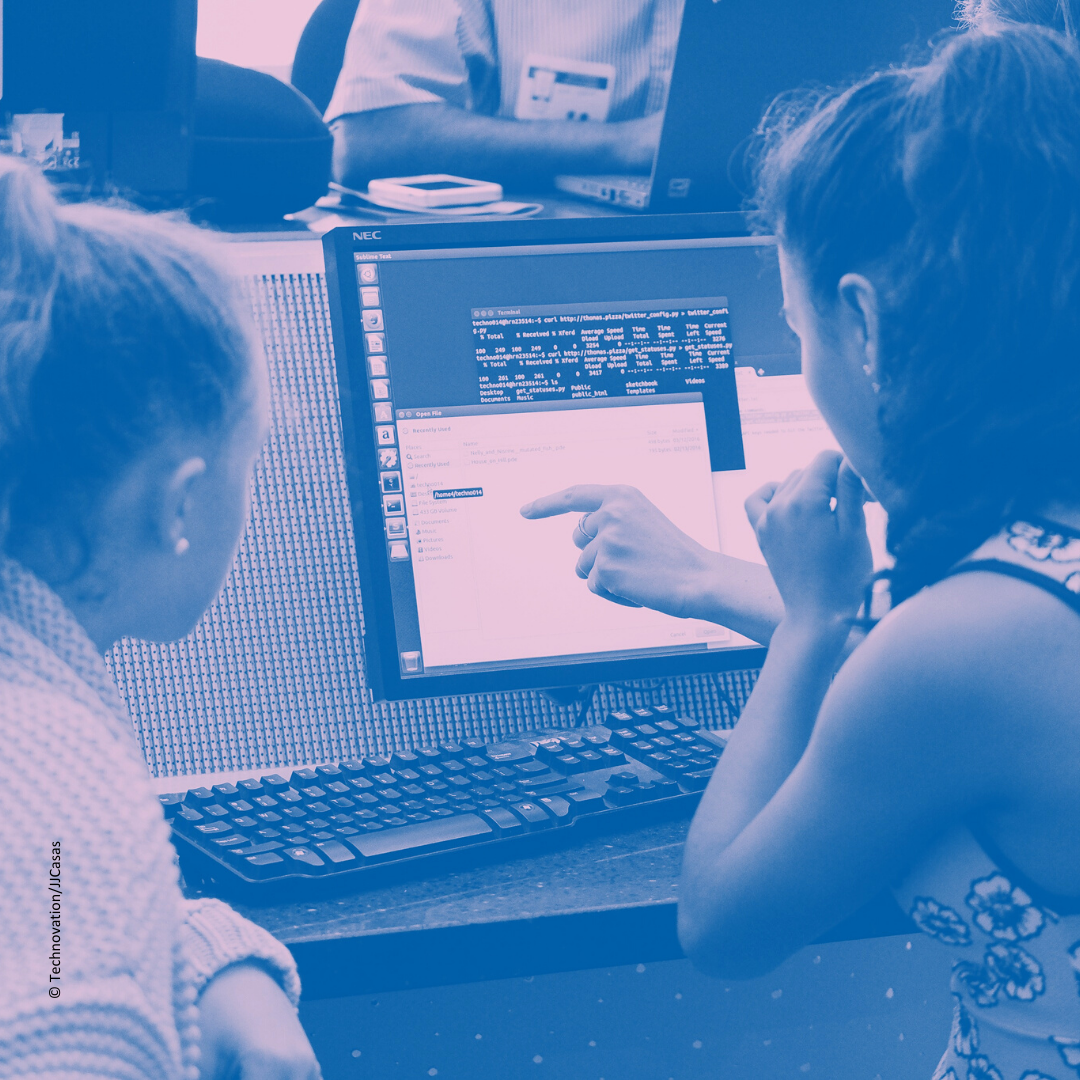Building back equal
Addressing the gender dimensions of the COVID-19 school closures
is key to safeguarding progress made on gender equality in education
in recent decades. Efforts to build back equal aim to support
5 million girls to fulfil their right to education with a focus
on the 20 countries with the greatest gender disparities
in education.
Why is it important?
Public health outbreaks have distinct gendered impacts, and
the COVID-19 pandemic is no exception. The unprecedented disruption to education is having immediate and potential longer-term effects on education and gender equality, particularly for the most marginalized. School closures have exacerbated girls’ and women’s unpaid care work, limiting the time to learn at home. Without schools as safe spaces, adolescent girls are at increased risk of gender-based violence, early marriage and unintended pregnancy, sexual exploitation and abuse. The crisis is also exacerbating boys’ disengagement from education in some regions.
But the crisis is also a window of opportunity to promote innovation, and strengthen the resilience and gender-responsiveness of education systems. Where digital solutions to distance learning are accessible, we can build the digital skills of girls and boys alike, and ensure all learners have the knowledge and skills they need to stay safe online.

How does it work?
Coalition members are working together to understand and address gender gaps in learning during school closures, and address health, protection and education issues that can negatively impact girls’ and boys’ learning continuity and reduce the likelihood that they will return to school. They are making sure that boys and girls re-enrol once schools reopen and that learning gaps are closed, and helping to build back equal by strengthening education systems to be gender-transformative, equitable and resilient.

News



Highlights of our work



Global study (forthcoming September 2021)


Other resources
• Issue note: Addressing the gender dimensions of COVID-related school closures: French, Spanish, Portuguese, Chinese, Mongolian
• Webinar, Addressing the gender dimensions of COVID-relates school closures: Synthesis report
Videos
• UNESCO Keeping Girls in the Picture signature video: French, Spanish, Arabic, Russian, Nepali, Hindi, Portuguese, Kiswahili
• Malala Yousafzai message: English, Urdu, Hindi, Spanish, French, Portuguese, Turkish, Arabic, Dari, Pashto
• Webinar, Addressing the gender dimensions of COVID-relates school closures: Recording
Partners
All-Africa Students Union | APO Group | Cambridge Education | Christian Dior Couture | CJ Group | Code.org | Education Cannot Wait | European Broadcasting Union (EBU) | Food and Agriculture Organization of the United Nations (FAO) | Girls Not Brides | Global Campaign for Education (GCE) | Global Partnership for Education (GPE) | Gulli AFRICA | Imagine Worldwide | Inter-agency Network for Education in Emergencies (INEE) | International Education Funders Group | JA Worldwide | KPMG | Michel Lafon Education | Micro:bit Educational Foundation | Nomad Education | Opportunity International Education Finance | Oxfam | Plan International | Pluralsight & Pluralsight One | Save the Children International | SIL International | Technovation | Uber | UNICEF | UN Women | Video Games Without Borders (VGWB) | World Food Programme (WFP) | World Vision International
